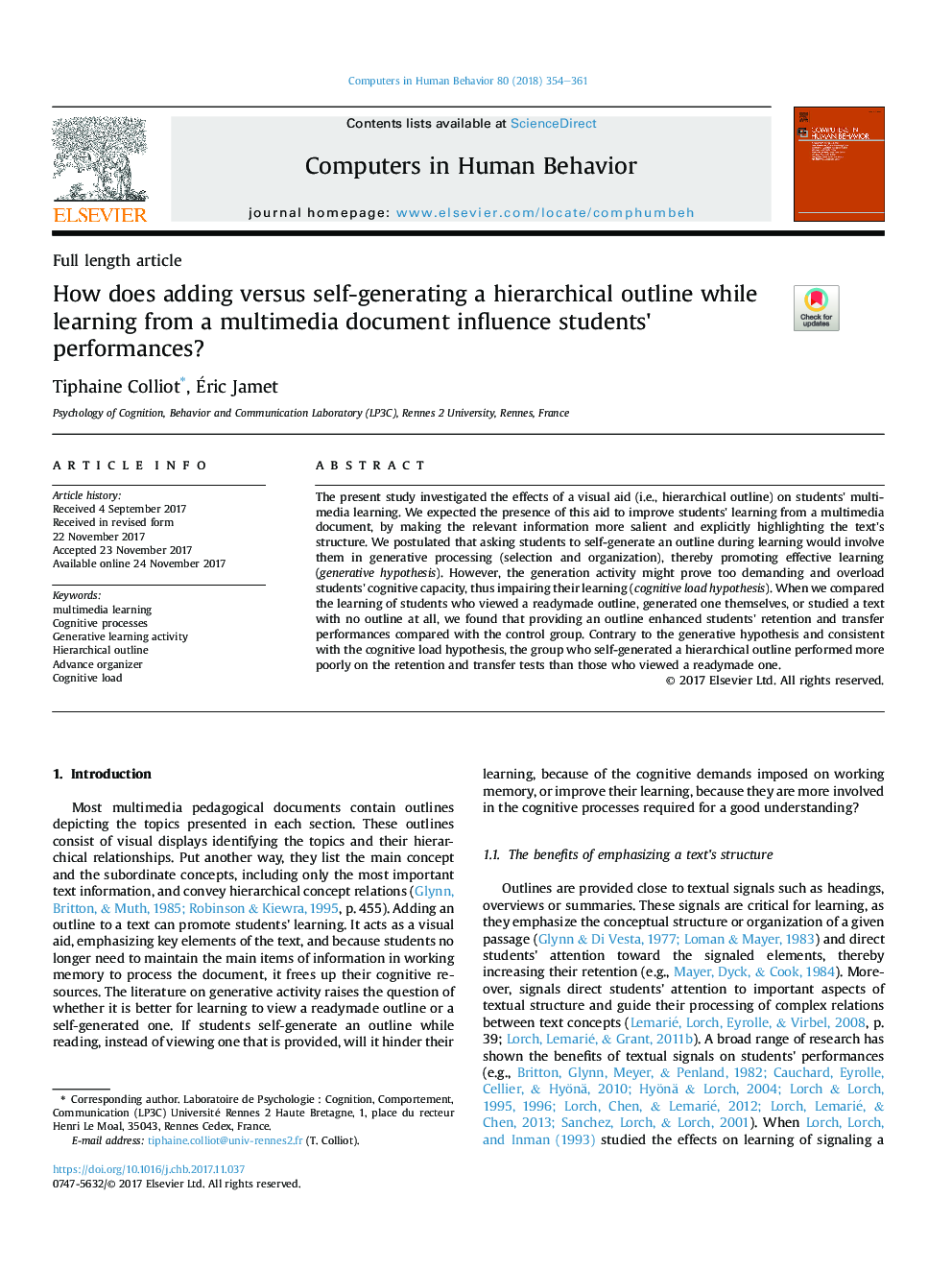| Article ID | Journal | Published Year | Pages | File Type |
|---|---|---|---|---|
| 6836279 | Computers in Human Behavior | 2018 | 8 Pages |
Abstract
The present study investigated the effects of a visual aid (i.e., hierarchical outline) on students' multimedia learning. We expected the presence of this aid to improve students' learning from a multimedia document, by making the relevant information more salient and explicitly highlighting the text's structure. We postulated that asking students to self-generate an outline during learning would involve them in generative processing (selection and organization), thereby promoting effective learning (generative hypothesis). However, the generation activity might prove too demanding and overload students' cognitive capacity, thus impairing their learning (cognitive load hypothesis). When we compared the learning of students who viewed a readymade outline, generated one themselves, or studied a text with no outline at all, we found that providing an outline enhanced students' retention and transfer performances compared with the control group. Contrary to the generative hypothesis and consistent with the cognitive load hypothesis, the group who self-generated a hierarchical outline performed more poorly on the retention and transfer tests than those who viewed a readymade one.
Related Topics
Physical Sciences and Engineering
Computer Science
Computer Science Applications
Authors
Tiphaine Colliot, Ãric Jamet,
